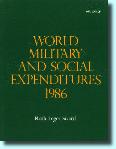Ruth Leger Sivard's |
||
 |
|
Home___Publications___Background___Contact |
|||
| |
||||||
World Military and Social Expenditures by Ruth Sivard |
||
Ruth Sivard’s rich storehouse of sad facts documents the hemorrhage of scarce and vital resources consumed by the ever escalating arms race. The obscenity of such priorities is highlighted by the fact that one hour’s global military expenditure would more than suffice to immunize the 3.5 million children destined to die annually from preventable infectious disease. James Grant, Director of Unicef, has posed the question whether the world would tolerate a Hiroshima-like catastrophe every three days. This, in fact, is now happening, for every three days 120,000 children die unnecessarily- thevery toll of casualties following the atomic bombing of Hiroshima. Indeed the children of the world are already living in the rubble of World War III. To end this threatening folly requires mobilization of mass public opinion to comprehend that the search for durable peace cannot be pursued through an overt flirtation with extinction. Mere education on medical consequences of nuclear war and recitation of litanies of doom will not prove effective. People must be educated to understand the linkage between the arms race and global economic problems as well as the deteriorating quality of their own lives. People must be made indignant at the subversion of technology and science. Only the unprecedented arousal of moral outrage will provide the spiritual energy to confront and overcome the entrenched bureaucracies and the richly financed military-industrial and scientific lobbies. That is why this volume is so vitally important; it arouses moral revulsion as it informs. Bernard Lown, M.D. |
||

Foreword by Bernard Lown
One of the great medical achievements of the 20th Century was the elimination of smallpox, a scourge that had claimed millions of lives. It was made possible by the close cooperation of American and Soviet scientists within the framework of the World Health Organization. The task, extending over a decade, cost merely the equivalent of three hours spent on the arms race.